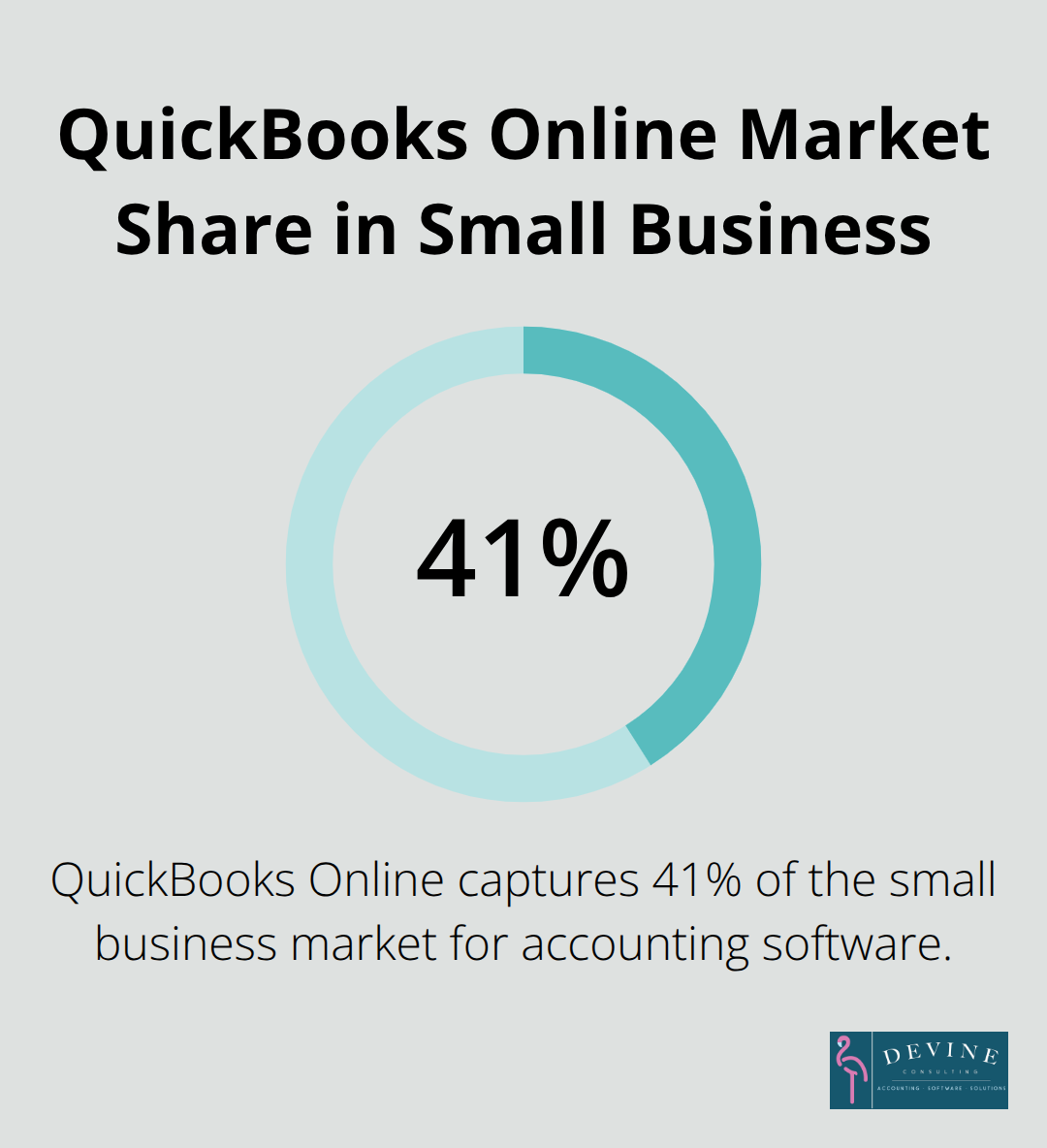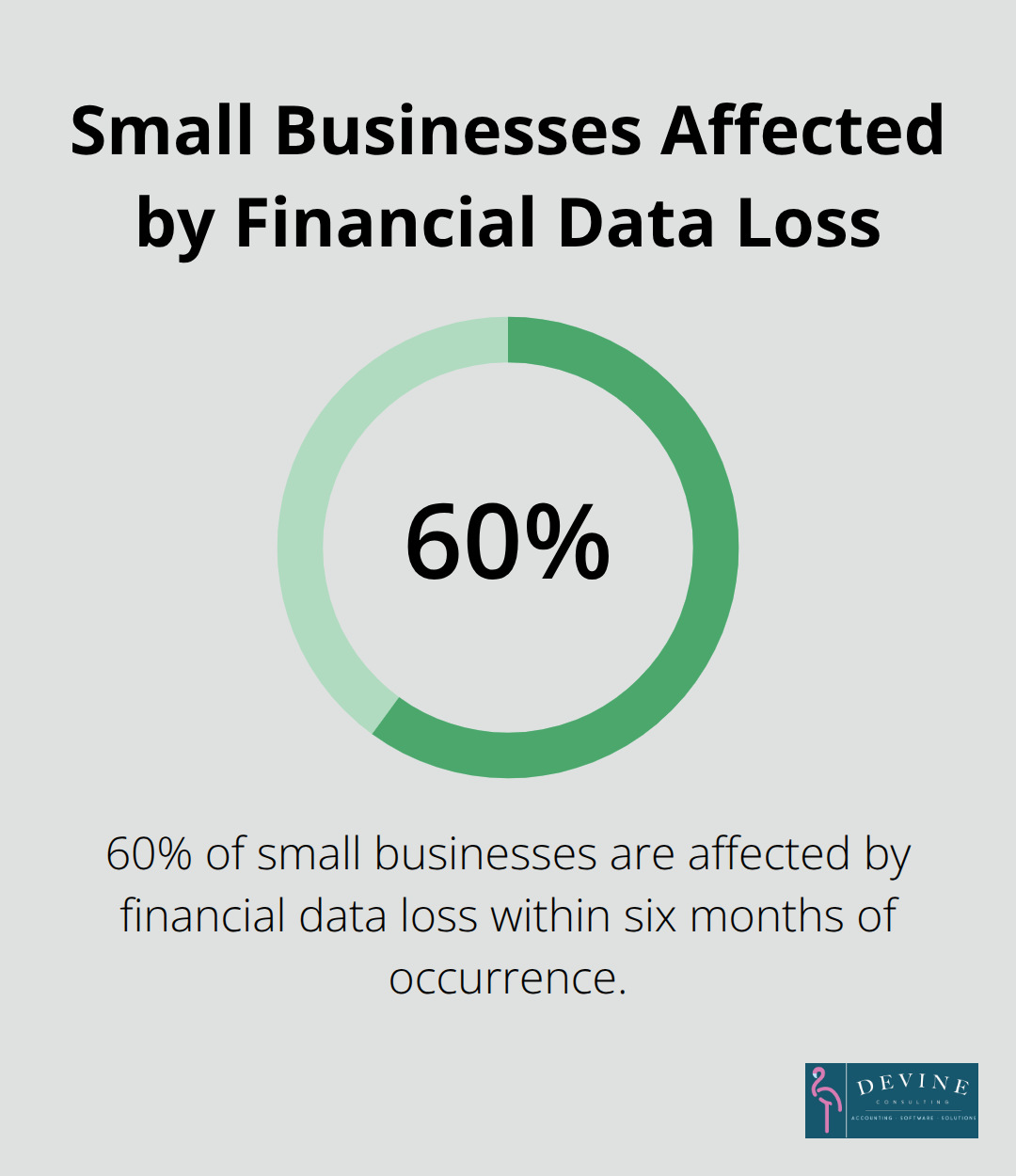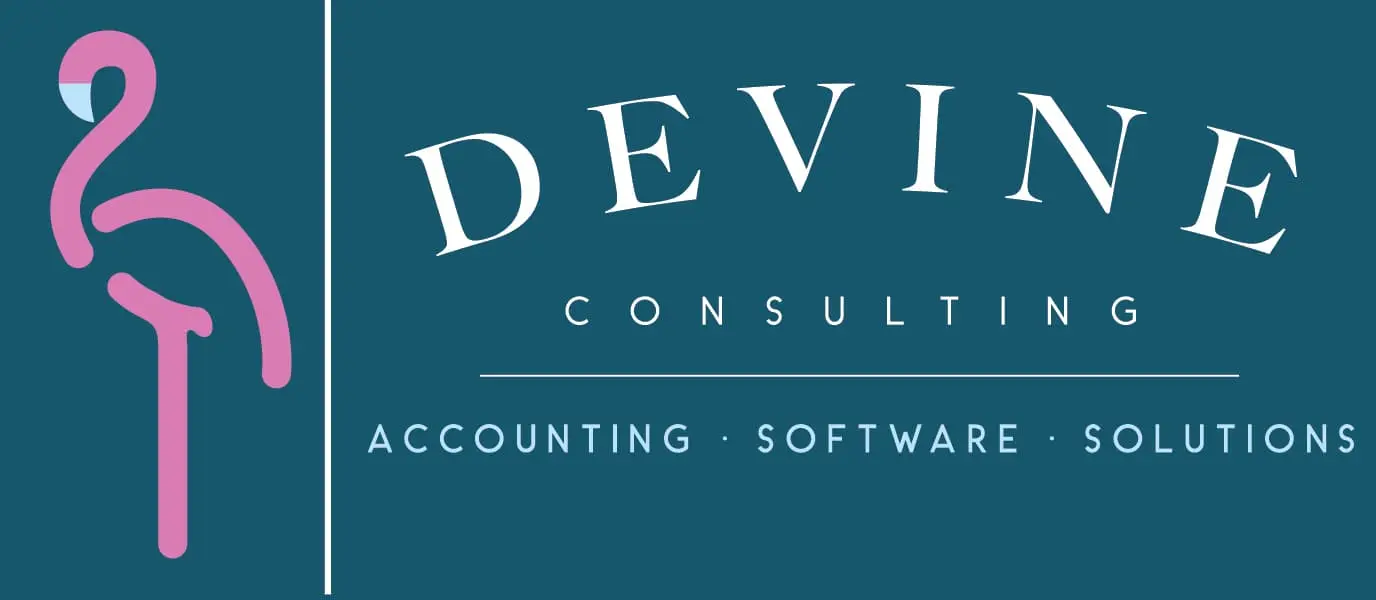How to Organize Financial Records Effectively
Poor financial record management costs businesses an average of $12,000 annually in missed deductions and compliance penalties. Most companies lose 21% of their potential tax savings due to disorganized documentation.
We at Devine Consulting see businesses struggle daily with scattered receipts and missing transaction records. Learning to organize financial records properly transforms your business operations and protects your bottom line.

Which Financial Records Must You Keep
Every business generates three types of financial records that determine tax compliance and operational success. Income documentation includes all sales receipts, invoices, bank deposits, and payment confirmations from customers. The IRS requires businesses to maintain records that show gross receipts for each tax year, with electronic payment records becoming increasingly important as 82% of B2B transactions now occur digitally (according to the Association for Financial Professionals).
Revenue Tracking Systems
Sales invoices must include customer information, transaction dates, payment methods, and detailed descriptions of goods or services provided. Credit card processing statements, PayPal records, and mobile payment confirmations serve as backup documentation for digital transactions. Monthly bank statements reconcile all deposit activities, while accounts receivable reports track outstanding customer payments. Businesses that use subscription models need recurring payment records and cancellation documentation to calculate accurate revenue recognition.
Expense Documentation Requirements
Transaction receipts for business purchases require vendor names, dates, amounts, and business purposes written directly on each receipt. The IRS specifically requires receipts for any expense over $75, though smart businesses keep all receipts regardless of amount. Travel expenses need additional documentation that includes mileage logs, hotel confirmations, and meal receipts with business purposes noted. Utility bills, rent payments, insurance premiums, and payroll records form the foundation of deductible business expenses that reduce taxable income significantly.
Tax Compliance Papers
Federal and state tax returns must be retained for seven years minimum, along with all supporting schedules and amendments. Employment tax records that include Form 941 quarterly reports, W-2s, and payroll tax deposits require at least four years of retention after filing the 4th quarter for the year. Property records for equipment purchases, depreciation schedules, and asset disposal documentation must be kept until three years after the property disposal date. Sales tax permits, workers compensation certificates, and business licenses need permanent retention as these documents prove legal business operations during audits.
The next step involves choosing the right storage system for these essential records, whether digital, physical, or a combination of both approaches.
Which Storage System Works Best
Cloud-based accounting software dominates modern business record management, with QuickBooks Online capturing 41% of the small business market according to Intuit’s 2024 financial report. Software solutions like Xero, FreshBooks, and Wave automatically categorize transactions, generate reports, and store unlimited documents with bank-level encryption. These platforms cost between $15-50 monthly but save businesses an average of 8 hours weekly on manual data entry tasks. Cloud storage provides instant access from any device, automatic backups, and integration with banking systems that eliminate manual transaction recording.

The major disadvantage involves monthly subscription costs and potential data breaches (though reputable providers maintain 99.9% uptime guarantees).
Physical Filing Remains Necessary
Paper records still serve important legal functions that digital systems cannot replace entirely. Original contracts, notarized documents, and certain legal agreements require physical signatures and storage for court proceedings. Fire-resistant filing cabinets cost $200-800 but protect irreplaceable documents from disasters that destroy 40% of businesses permanently according to FEMA statistics. Physical storage works best for businesses with minimal transaction volumes or owners who prefer tangible record control. The main drawbacks include space requirements, manual organization time, and vulnerability to theft or natural disasters.
Smart Businesses Use Both Methods
Hybrid systems combine digital efficiency with physical security by scanning important documents while maintaining originals for legal requirements. Businesses scan receipts immediately using smartphone apps like Receipt Bank or Expensify, then store physical copies for 30-90 days before disposal. This approach reduces storage space by 80% while maintaining audit trail compliance. Monthly costs range from $25-75 for scanning software plus minimal physical storage (creating the optimal balance between accessibility and legal protection that growing businesses need).
The storage system you choose directly impacts how effectively you can organize and retrieve your financial records when needed.
How Should You Organize Financial Records
The most effective financial record organization systems follow the 3-7-30 rule: three main categories, seven subcategories maximum, and 30-second retrieval time for any document. Businesses that implement structured filing systems can significantly improve their audit preparation and compliance processes. Create three primary folders labeled Income, Expenses, and Legal Documents, then subdivide each category by month or transaction type. Digital files require consistent naming conventions using YYYY-MM-DD format followed by vendor names and amounts, while physical documents need color-coded folders with matching digital backups. The key involves treating organization as a daily habit rather than an annual cleanup project.
Categorization Systems That Work
Smart businesses organize records into logical categories that match their operations and tax requirements. Income documents go into monthly folders with subcategories for cash sales, credit transactions, and recurring payments. Expense records divide into operational costs (rent, utilities, supplies) and capital expenditures (equipment, vehicles, property improvements). Legal documents require separate storage with permanent retention folders for contracts, licenses, and incorporation papers. This system allows any employee to locate specific documents within seconds during audits or financial reviews.
Weekly Backup Protocols Save Businesses
Financial data loss affects 60% of small businesses within six months of occurrence, making weekly backup schedules non-negotiable for business survival. Cloud storage providers like Google Drive and Dropbox automatically sync files, but manual verification prevents corruption issues that destroy months of work. Schedule automated backups every Tuesday and Friday, then test restoration capabilities monthly by downloading random files to verify accessibility. Physical documents require scanning within 48 hours of receipt, with originals stored in fireproof safes for legal requirements.
Retention Rules Prevent Legal Problems
The IRS accepts digital copies for most audits, but property deeds, contracts, and loan agreements need physical storage for seven years minimum. Banks require businesses to retain records for specific timeframes: three years for general transactions, seven years for tax-related documents, and permanent storage for incorporation papers and major asset purchases. Employment records follow different rules with payroll documents kept for four years and worker injury reports stored permanently. Smart businesses create retention calendars that automatically flag documents for disposal reducing storage costs while maintaining compliance with federal regulations.

Final Thoughts
Effective financial record management requires three fundamental elements: comprehensive documentation, strategic storage systems, and consistent habits. Businesses that organize financial records properly reduce compliance costs by $12,000 annually while capturing 21% more tax deductions through systematic documentation practices. The combination of digital and physical storage systems provides optimal security and accessibility for companies.
Cloud-based solutions handle daily transactions efficiently, while physical storage protects legal documents that require original signatures. Weekly backup protocols prevent the data loss that destroys 60% of small businesses within six months (according to industry research). Implementation starts with the 3-7-30 system and retention schedules that match IRS requirements.
Companies benefit from treating record organization as a daily operational task rather than an annual burden that creates compliance risks. Devine Consulting helps businesses maintain organized financial systems that support long-term growth and stability. We focus on providing accounting solutions while you concentrate on core business operations.


